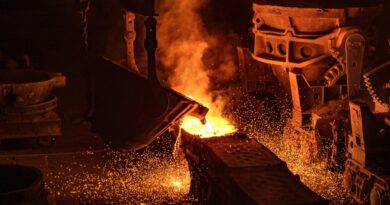China to close small ferrochrome furnaces
Roskill has reported that under the guidance of China’s 14th five-year plan (2021-2025), officials have started to impose several measures to develop a ‘greener’ Chinese ferroalloy and steel industry.
To ensure that the energy consumption per unit of GDP will decrease by 3.4% in 2021, an electricity policy to cut supply was issued by Wulanchabu Industrial and Information Technology bureau on 10 January, followed by the Fengzhen government issuing an updated notice for its ferrochrome industry on 23 January to control energy consumption.
The resultant furnace regulations include:
- All furnaces below 25MVA must be shut down. Producers who produce noble alloys, will have their product reviewed by end-February and be allowed to operate if the required qualifications are met.
- Only one open or semi-closed furnace above 25MVA can be put into operation by operators, while the rest of the furnaces must be shut down. All open and semi-closed furnaces are required to complete the technological upgrading to closed furnaces, and only qualified furnaces can come back online after they are examined by the government before the end of February.
- All furnaces, regardless of size, will be examined according to the energy consumption indicators from Bureau of Statistics at the end of February. Those not meeting the required qualifications will be forced to shut down.
Inner Mongolia’s Fengzhen is one of the core areas in Ulanqab for producing high-carbon ferrochrome (HC FeCr) in China, with the total capacity accounting for around 30% of Inner Mongolia and 15% of the country. However, nearly half of the area’s furnaces are below 25MVAsays Roskill.
At this point, it is not clear if and when this regulation will filter through into the other key ferroalloy producing regions, but for now it is in line with China’s 14th five-year plan (2021-2025).
All furnaces below 25MVA across China account for about two-thirds of total installed capacity, although this is significantly lower when comparing operational capacity.
Structural reforms of smelting furnaces in China have generally moved in tandem with the development of larger, cleaner furnaces. These furnaces also operate at higher efficiency rates and therefore inevitably lead to a net increase in operational capacity.
Roskill says, the closure of small and non-closed ferrochrome furnaces in China has already been ongoing, but the decision to close all furnaces up to 25MVA has caught many in the industry off-guard, as the expected closures were thought to coincide with the development of new capacity.
Certainly, the immediate closure drives a short-term tightness in supply and producers outside of China will look for opportunities to fill the gap. Nevertheless, available furnaces larger than 25MVA are theoretically capable of accounting for the equivalent volume of China’s total 2019 output level.
China’s 14th five-year plan (2021-2025) which outlines:
- Replacing high-speed growth with high-quality.
- Rebalancing its economy with supply-side structural reform.
- Driving modernization through innovation and technological advancements.
- Promoting high-end, intelligent, and green production.
Roskill’s Chromium: Outlook to 2030, 16th Edition report provides you with up-to-date market insights on chromium supply, demand, trade and prices together with forecasts that lay out the fundamentals of the industry.




